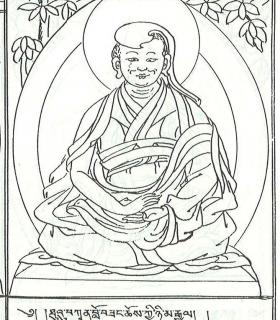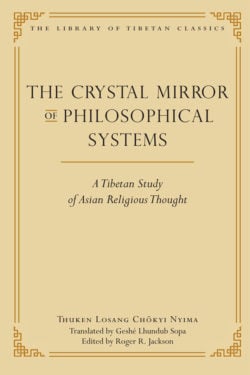Thuken Losang Chökyi Nyima

Thuken Losang Chökyi Nyima (1737–1802) was among the most cosmopolitan and prolific Tibetan Buddhist masters of the late eighteenth century. Hailing from the “melting pot” region of Amdo, he was Mongol by heritage, and educated in Gelukpa monasteries. Throughout his life, he traveled widely in east and inner Asia, spending significant time in Central Tibet, Amdo, inner Mongolia, and at the Qing court in Beijing. He served as abbot of several important monasteries, and wrote hundreds of texts on Buddhist thought and practice, the most enduring and influential of which is the Crystal Mirror of Philosophical Systems.
Books, Courses & Podcasts
The Crystal Mirror of Philosophical Systems
The Crystal Mirror of Philosophical Systems, by Thuken Losang Chökyi Nyima (1737–1802), is arguably the widest-ranging account of religious philosophies ever written in pre-modern Tibet. Like most Tibetan texts on philosophical systems, this work covers the major schools of India, both Buddhist and non-Buddhist, but then goes on to discuss in detail the entire range of Tibetan traditions as well, with separate chapters on the Nyingma, Kadam, Kagyü, Shijé, Sakya, Jonang, Geluk, and Bön schools. Not resting there, Thuken goes on to describe the major traditions of China—Confucian, Daoist, and the multiple varieties of Buddhist—as well as those of Mongolia, Khotan, and even Shambhala. The Crystal Mirror of Philosophical Systems is unusual, too, in its concern not just to describe and analyze doctrines, but to trace the historical development of the various traditions. The Crystal Mirror of Philosophical Systems is an eloquent and erudite presentation exploring the religious history and philosophical systems of an array of Asian Cultures—and offering evidence that the serious and sympathetic study of the history of religions has not been a monopoly of Western scholarship.
Learn more about the Library of Tibetan Classics
Learn about becoming a benefactor of the Library of Tibetan Classics
Learn more about Thuken Losang Chökyi Nyima at the Treasury of Lives.

